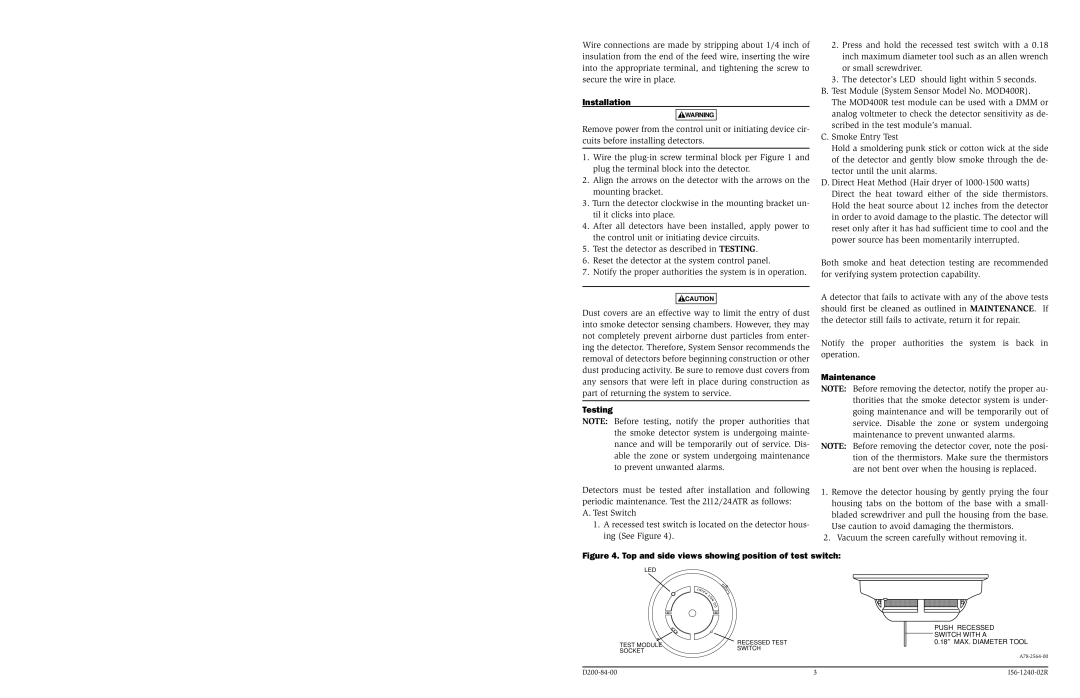24ATR specifications
The System Sensor 24ATR is a reliable and highly advanced smoke detector designed for commercial and industrial applications. This innovative device combines a range of features, technologies, and characteristics that ensure efficient smoke detection, enhancing safety and protection in various environments.One of the standout features of the 24ATR is its use of dual-sensor technology. This integration of both ionization and photoelectric sensors allows the unit to respond more effectively to different types of fires. Ionization sensors are particularly responsive to flaming fires, while photoelectric sensors excel in detecting smoldering fires. This dual capability enables the 24ATR to provide comprehensive detection, reducing false alarms and improving overall safety.
The System Sensor 24ATR also incorporates advanced signal processing algorithms. These algorithms analyze sensor data in real-time, allowing for quicker and more accurate detection of smoke particles. This feature enhances the unit's ability to discern genuine threats from non-threatening sources like cooking fumes or dust, which are common triggers for nuisance alarms.
Another significant advantage of the 24ATR is its built-in sounder. This sounder emits an audible alarm when smoke is detected, ensuring that occupants are promptly alerted in the event of an emergency. The volume and tone of the sound are adjustable, allowing customization according to specific environmental needs, making it adaptable for various settings.
Moreover, the 24ATR is designed with ease of installation and maintenance in mind. The device is compatible with various mounting options and can easily integrate into existing fire alarm systems. Additionally, the unit's low profile and sleek design make it aesthetically pleasing, ensuring that safety features do not compromise the look of a facility.
The robustness of the System Sensor 24ATR extends to its durability in harsh environments. It is built to withstand a range of temperatures and humidity levels, ensuring reliable performance under different conditions. The detector is also equipped with a sealed housing to prevent dust and dirt intrusion, which can impair sensor functionality.
In summary, the System Sensor 24ATR stands as an exemplary smoke detection solution, featuring dual-sensor technology, advanced signal processing, an integrated sounder, ease of installation, and durable construction. With these attributes, it is an ideal choice for ensuring safety in commercial and industrial environments, providing peace of mind to building owners and occupants alike.

